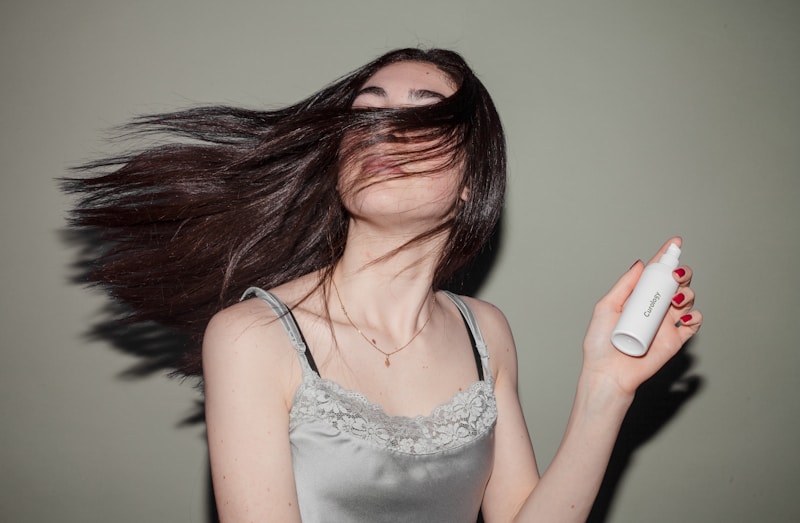Exploring Hair Adornments Inspired by Cultures: A Journey Through Time and Tradition
In the rich tapestry of human history, hair adornments have served as significant cultural symbols, illustrating identities, beliefs, and artistry. From delicate hairpins in ancient China to vibrant headdresses worn by Indigenous tribes, these adornments encapsulate the essence of diverse cultures. In this article, we will delve into various hair adornments inspired by cultures around the world, their meanings, historical significance, and contemporary relevance. Whether you are looking to enhance your own hair styling or simply curious about cultural artifacts, this piece will shed light on numerous fascinating aspects of hair adornments.
The Significance of Hair Adornments Across Cultures
Hair adornments are not merely aesthetic embellishments; they hold deeper meanings and serve various purposes across cultures. Many societies use these adornments to signify social status, marital status, and cultural identity. For instance, in African cultures, intricate hairstyles and adornments often indicate a person's tribe and social standing. Similarly, in South Asian cultures, bridal hair adornments are symbols of prosperity and are believed to ward off evil.
| Culture | Type of Adornment | Significance |
| African | Beaded hair bands | Indicate tribal identity and status |
| Native American | Feathered headdresses | Symbol of bravery and heritage |
| Chinese | Hairpins (Ji) | Signify marital status and elegance |
| Indian | Maang Tikka | Enhances beauty and offers protection |
Exploring Diverse Culture-Inspired Hair Adornments
African Hair Adornments
African hairstyles have long been rich in meaning and innovation, showcasing techniques and adornments that are both beautiful and culturally significant. Protective hairstyles such as braids and twists are often embellished with colorful beads and cowrie shells, which are not only decorative but also convey messages about the wearer's history, social status, and even age. In many cultures, such as the Himba people of Namibia, hair plays an essential role in daily practices and rites of passage, often indicating rank or marital status.
Native American Hair Adornments
In many Indigenous cultures, hair represents much more than personal style; it’s a profound connection to heritage and spirituality. Traditional Native American headdresses are ornately crafted with feathers, each representing a specific achievement or notable act within the tribe. Additionally, braids and adornments made from natural materials like sinew and leather often tell stories of ancestry and cultural experiences. The act of styling hair can also represent a cultural ritual, reinforcing bonds among community members.
Asian Hair Adornments
In Eastern cultures, hair adornments such as hairpins (known as Ji in China) play a dual role; they are both decorative and functional. Traditionally worn by women, these ornate hairpins can signify marital status (e.g., unmarried women wear flowers while married women opt for more intricate designs) and are often passed down through generations as family heirlooms. In Japan, elaborate kanzashi hair accessories are used during festivals and special occasions, mirroring the beauty and intricacy of nature.
South Asian Hair Adornments
In South Asia, specifically in India, hair adornments like Maang Tikka, Jhumka, and floral hair garlands hold cultural and religious significance. A Maang Tikka is a decorative piece that rests on the forehead, often worn by brides and symbolizes the third eye of consciousness. Similarly, brides often wear elaborate hairstyles adorned with fresh flowers and decorative jewelry, reflecting their cultural heritage and belief systems. These adornments not only enhance beauty but also bridge connections to tradition and spirituality.
The Evolution of Hair Adornments in Modern Times
With globalization and the intermingling of cultures, hair adornments have evolved to include a blend of traditional and contemporary styles. Modern designers often draw inspiration from historical artifacts, reinterpreting them for contemporary wearers. For instance, chokers and decorative combs have seen a resurgence in popularity, reflecting both vintage aesthetics and cultural homage. Furthermore, many modern brands emphasize ethical sourcing, ensuring that their products respect the cultures they draw inspiration from.
Tips for Incorporating Cultural Hair Adornments
If you are interested in incorporating cultural hair adornments into your look, consider the following tips:
- Research: Understand the cultural significance of the adornment you choose. This shows respect and appreciation for its origins.
- Choose Ethically: Support artisans and brands that promote fair trade practices.
- Mix and Match: Feel free to blend different cultural styles, but ensure that you retain respect for the meanings behind each piece.
- Layering: Experiment with different adornments in your hair, whether it’s combining braids with intricate pins or floral decorations.

Conclusion
Hair adornments inspired by cultures around the world are more than mere accessories; they are profound reflections of identity, history, and art. By exploring these adornments, we gain insight into the diverse beliefs, standards of beauty, and traditions that exist across the globe. When incorporating these items into your own style, it’s crucial to approach them with respect and understanding of their cultural significance. This not only enriches your personal style but also fosters cultural appreciation and connection. In a world that continuously evolves, let us cherish these beautiful symbols and the stories they tell.